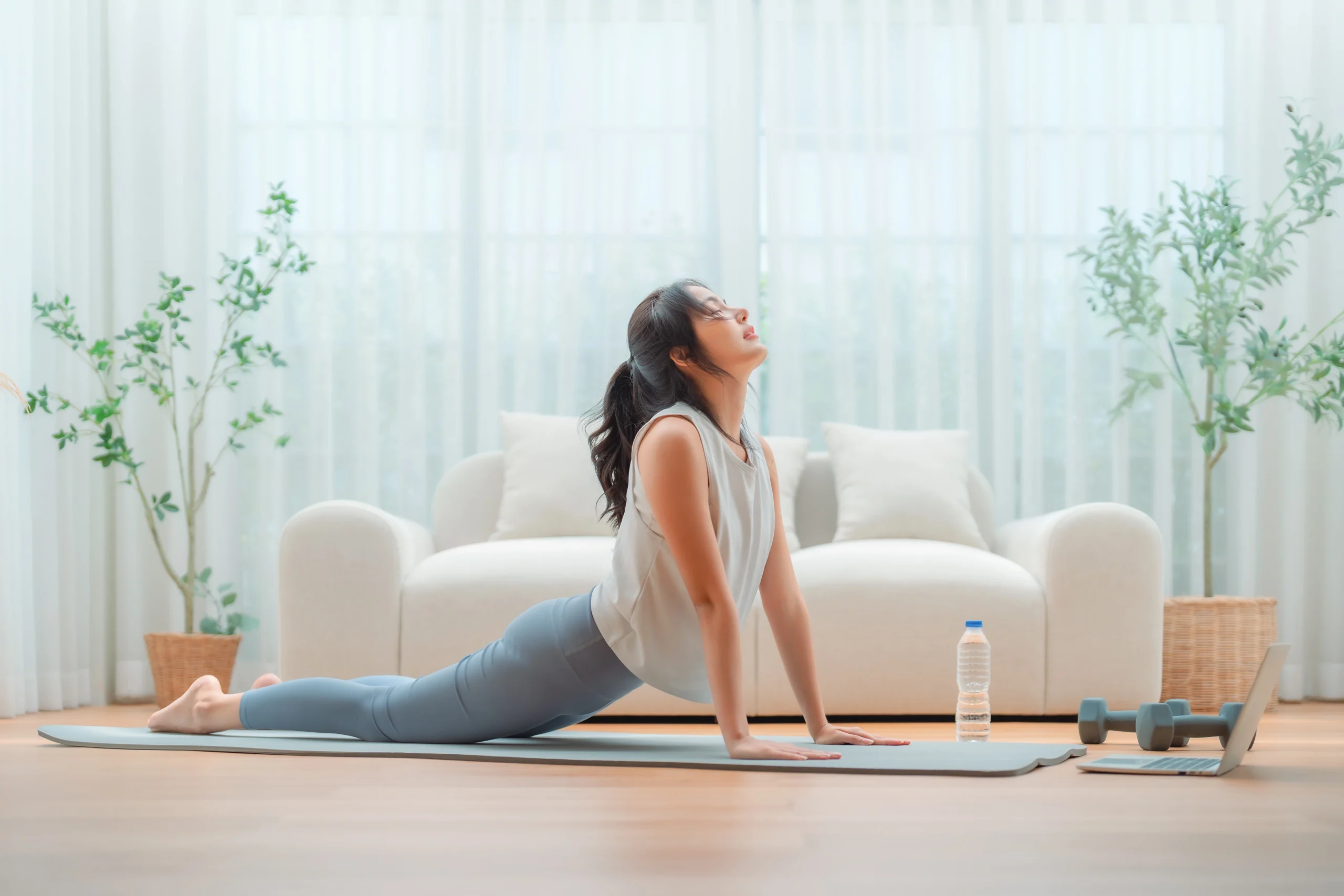
If you’ve been diagnosed with endometriosis, you might be wondering whether exercise is a friend or foe. The good news? It can definitely be your friend, if you approach it gently, thoughtfully, and consistently. Here’s how you can keep active safely while managing your symptoms.
What is Endometriosis?
First, let’s quickly cover the basics. Endometriosis is a condition where tissue similar to the lining of your womb starts growing elsewhere in your body, usually around your ovaries, pelvis, or fallopian tubes. It can cause serious discomfort, especially during your periods, making everyday activities a bit of a battle.
But staying active can actually help manage some of this discomfort.
Why Exercise Helps
Dr Diamandis says “Exercise can be a powerful tool for managing endometriosis, offering benefits like pain relief, hormone balance, improved mood and reduce fatigue.”
Gentle exercise can ease pain, reduce stress, and even help lift your mood. Moving regularly also encourages better circulation, which can reduce inflammation. But remember, it’s all about balance and moderation.
Safe Exercise Tips for Endometriosis
Here are some friendly, practical tips for exercising safely with endometriosis:
1. Listen to Your Body
This might sound obvious, but, your body knows best. If something hurts or causes sharp discomfort, take a step back. No exercise should ever leave you feeling worse off.
2. Low-Impact
Consider swapping high-impact workouts like running or jumping for gentler options. Yoga, swimming, cycling, or even a brisk walk can get your heart pumping without triggering a painful flare-up.
Easy Exercises to Try
To help get you started, here are some gentle exercises that many women find helpful:
- Yoga: Yoga isn’t just about flexibility. It’s amazing for stress reduction and gentle strengthening. Try poses like child’s pose, cat-cow, and reclining twists. Apps like “Yoga with Adriene” on YouTube are a great place to start, especially her beginner-friendly videos.
- Pilates: Pilates strengthens your core, which supports your lower back and pelvis. Classes specifically tailored for beginners or those with pelvic pain can be particularly beneficial.
- Walking: It’s simple, accessible, and calming. Plus, walking outdoors can give you a mood boost by connecting you with nature—especially beneficial if you’re feeling overwhelmed by pain or stress.
Avoiding Overexertion
Even if you’re feeling good, it’s crucial not to push too hard. It’s tempting to go all-out when your symptoms ease, but gentle and steady usually wins the race with endometriosis.
Imagine your exercise routine like tending a delicate garden—consistent gentle care works better than one intense session every now and then.
Making Exercise Enjoyable
Exercise doesn’t have to feel like a chore. Find something you enjoy, maybe dancing around your living room, a calm swim at your local leisure centre, or stretching quietly at home to your favourite playlist.
Mixing things up also keeps boredom at bay. If you feel stuck, try joining a local yoga class or find an online community where others share your experiences.
Managing Pain During Exercise
If you do experience discomfort, don’t panic. Slow down, breathe deeply, and gently ease off the exercise. Applying heat to your belly or lower back before and after exercising can also provide relief. Heat pads or a hot water bottle can be your best mates here.
Also Read: How to ease pain from Endometriosis
Hydration and Nutrition
Keeping hydrated is essential, especially when managing pain. Water helps flush out toxins and reduces inflammation. Pairing exercise with a balanced diet—rich in anti-inflammatory foods like fruits, veggies, and healthy fats—can further ease your symptoms.
Further Reading: Meal Planning for Endometriosis
Seeking Professional Advice
If you’re unsure where to start, it’s always worth talking to a healthcare provider or a specialist physiotherapist. They can recommend tailored exercises to fit your specific needs. You don’t have to figure everything out alone.
Mindfulness and Breathing
Let’s quickly talk about breathing. Breathing exercises and mindfulness techniques can greatly reduce stress, which often aggravates endometriosis symptoms. Simple deep-breathing exercises can be woven into your routine easily, try them while stretching or during gentle yoga.
Dealing with Tough Days
There’ll inevitably be tougher days, days when exercising feels impossible. And that’s okay. Your body is managing a lot, and rest is crucial too. It’s perfectly fine to curl up with a comforting cup of tea and your favourite series. Tomorrow might feel a bit brighter.
Gentle Reminder: You’re Not Alone
Endometriosis can sometimes feel isolating, but thousands of women experience similar challenges every day. Online communities, forums, and local support groups can offer encouragement and share personal tips.
Exercise with endometriosis isn’t about pushing your limits, it’s about gentle, steady movement that supports your wellbeing. Whether it’s yoga stretches, peaceful walks, or mindful breathing, incorporating these tips into your routine can help you feel better physically and emotionally.
Remember, you’ve got this, and every small step counts toward feeling more like yourself again.
LTF Editorial Team
The Love to Feel editorial team is a collective of passionate health writers, researchers, and lived-experience advocates dedicated to shining a light on endometriosis, dysmenorrhea, and everything that comes with them. We dive deep into the latest science, decode complex medical jargon, and center real stories to create content that informs, empowers, and supports. From expert-led guides and lived-experience features to practical tips, interviews, and myth-busting explainers, we’re here to help you navigate the messy, painful, and often misunderstood world of chronic pelvic pain and menstrual health—with empathy, accuracy, and a drive for change.